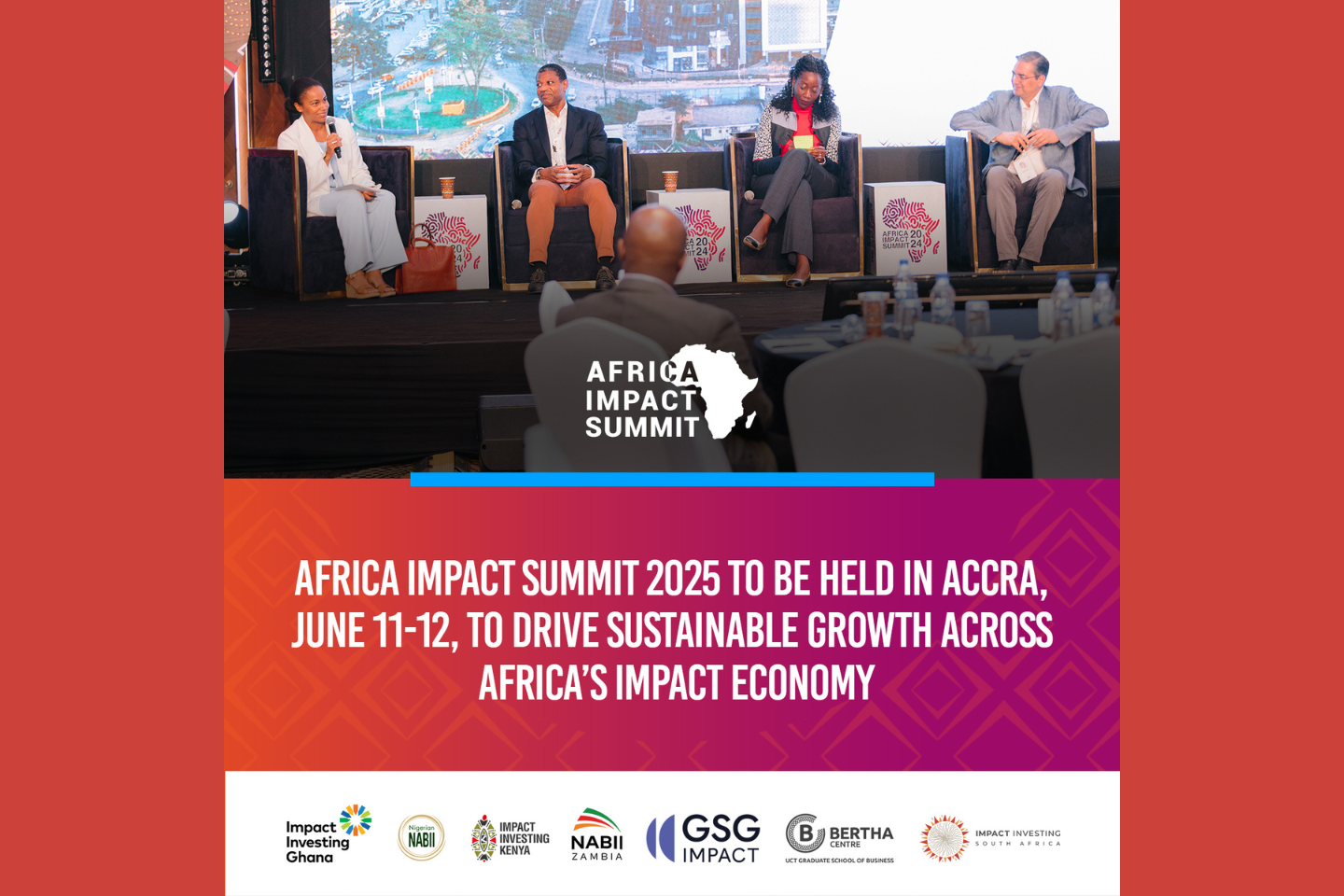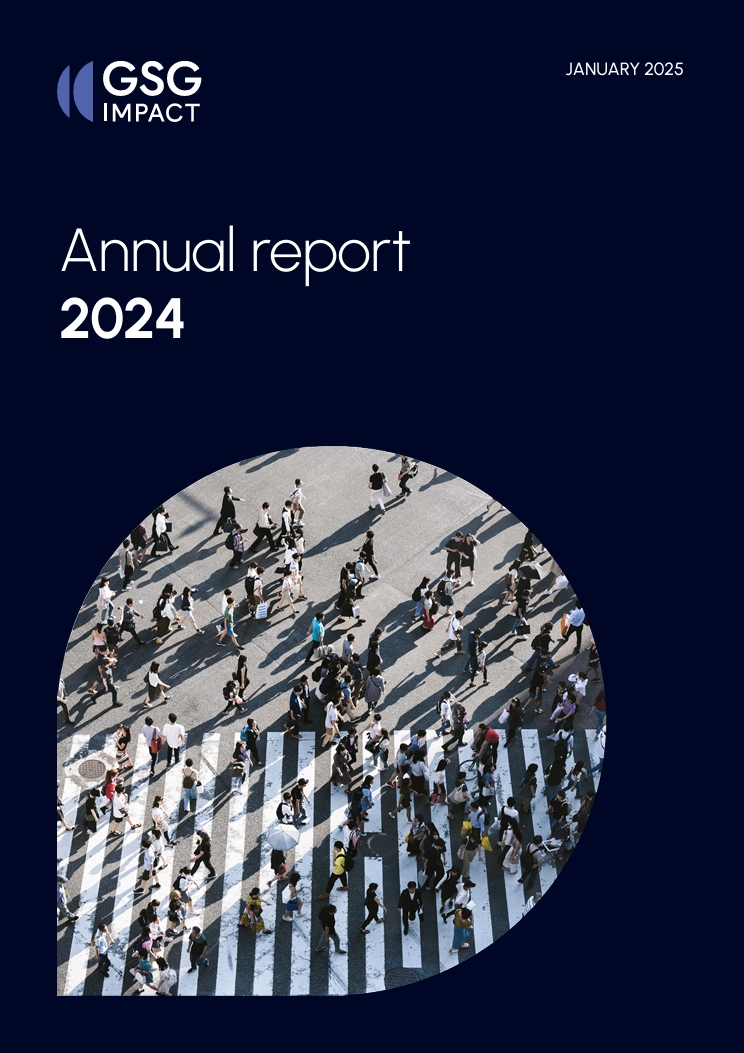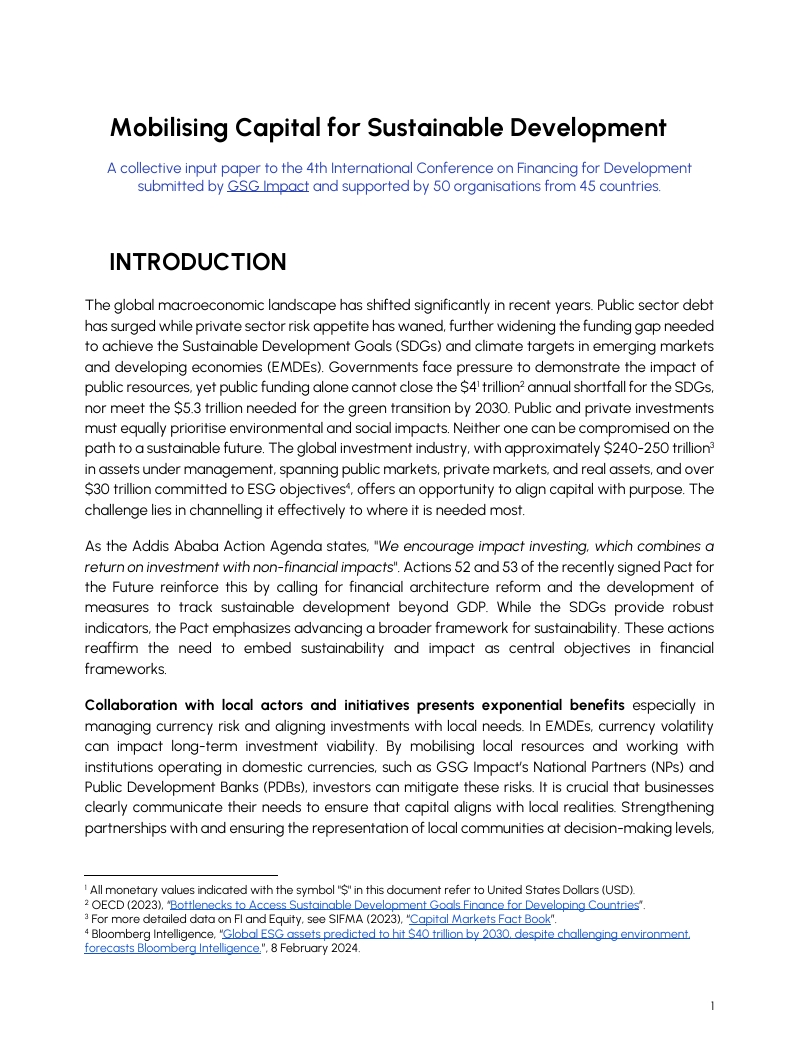
To achieve the SDGs by 2030, we face a $2.5 trillion annual financing gap.
While tremendous amounts of capital are moving into impact financing to close this gap, doubts remain around their impact. This report examines this flow of capital, with a specific focus on impact investing due to its rapid emergence and challenging, subjective definition for which funds should “count.”

Regulatory solutions
- EU SFDR
- Biden Administration’s Sustainability Agenda
- China’s Sustainability regulations

Harmonisation
- CRD Better Alignment Project
- WEF’s IBC white paper
- IMP
- IFRS (SSB)
- Joint Statement of Intent

Principles and guidelines
- IFC’s Operating Principles for Impact Management
- UN PRI
- SVI’s Social Value Principles
- UNDP
- UNEP FI’s Principles for Positive Impact Finance)
- UNGC

Frameworks, metrics and reporting
- CDP
- CDSB
- CFA ESG Standards
- GIIN (IRIS+)
- GRI standards
- IIRC framework
- SASB standards
- SVI standards
- TCFD

Ratings and valuation
- WBA
- B Lab
- HBS’s Impact Weighted Accounts Initiative
(IWAI)
Method
With support from the Skoll Centre for Social Entrepreneurship, we conducted a systems mapping (Meadows, 1999) exercise to better understand the interlocking entities within the impact investing ecosystem and how they relate to each other. This visual methodology allows for clarified communication and rapidly showcases the most pressing issues affecting current and aspiring practitioners and investors.
Here, our mapping of the impact investment landscape is also meant to provide a jumping-off point for articulating key leverage points to develop interventions, innovations, and policies that prevent impactwashing, improve impact assurance, and increase investments into impact.











